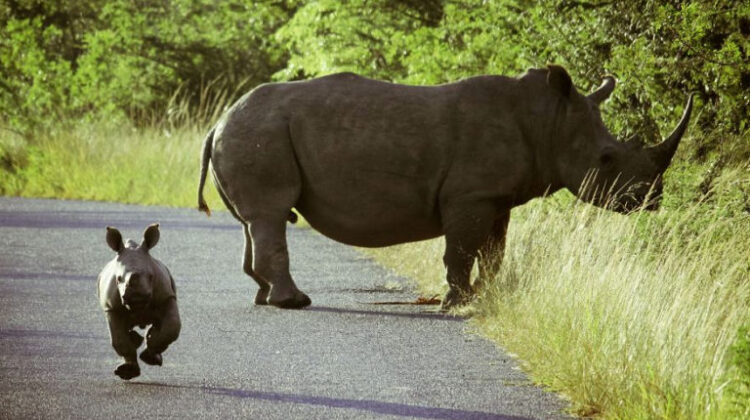
During a safari tour in St Lucia, South Africa, the happy rhino calf was sighted. The newborn rhino ran ahead of his mother’s heavy footsteps, bouncing around like a spring lamb (but a lot heavier).
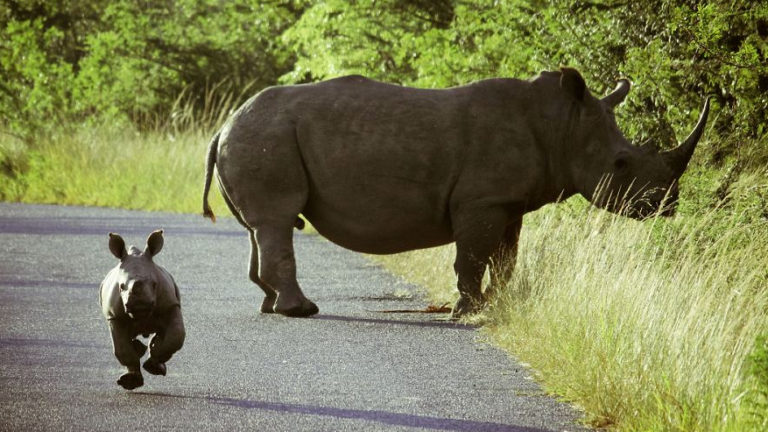
A safari tour guide, Robyn Bamber, was able to get some incredible images of the newborn animal leaping and posing for the camera. She had discovered the rhinos at the end of a half-day driving safari in the South African wilderness for Heritage Tours & Safaris.
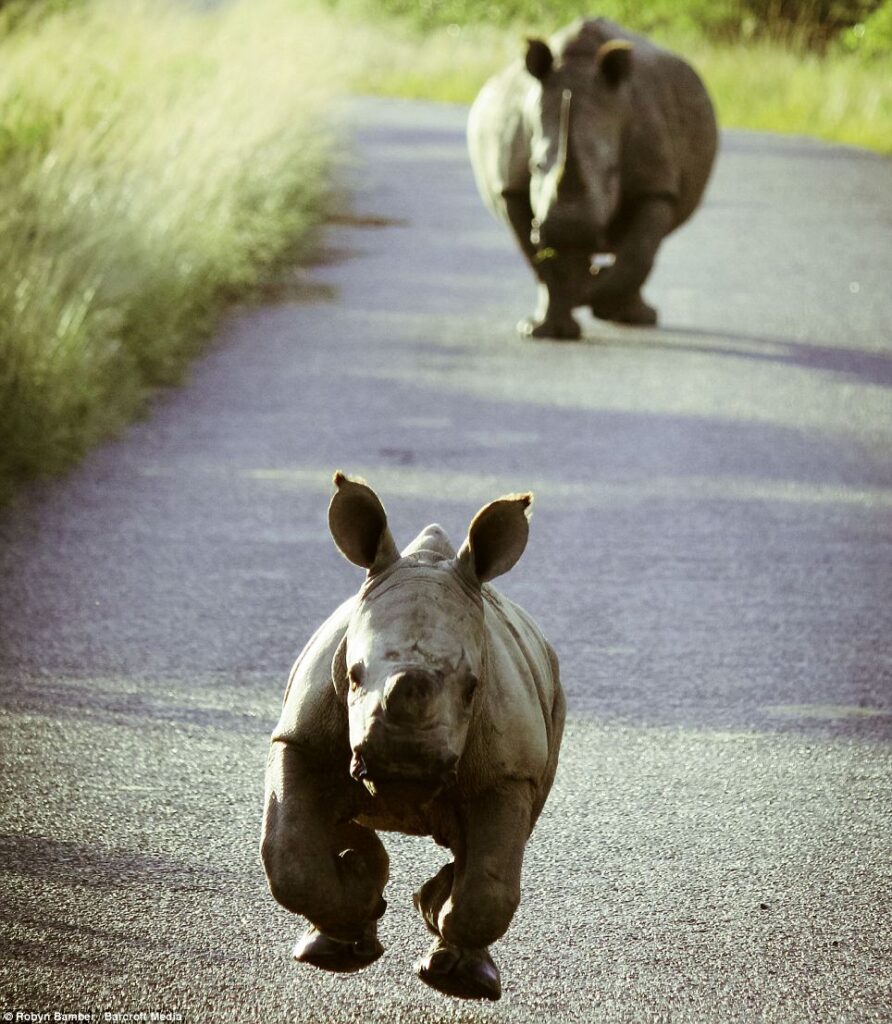
Credit: Robyn Bamber


The small one got within 1.5 meters of the truck and gave a satisfied snort before turning on its footsteps and retreating into the forest. His daring act certainly caught the tourists off guard!
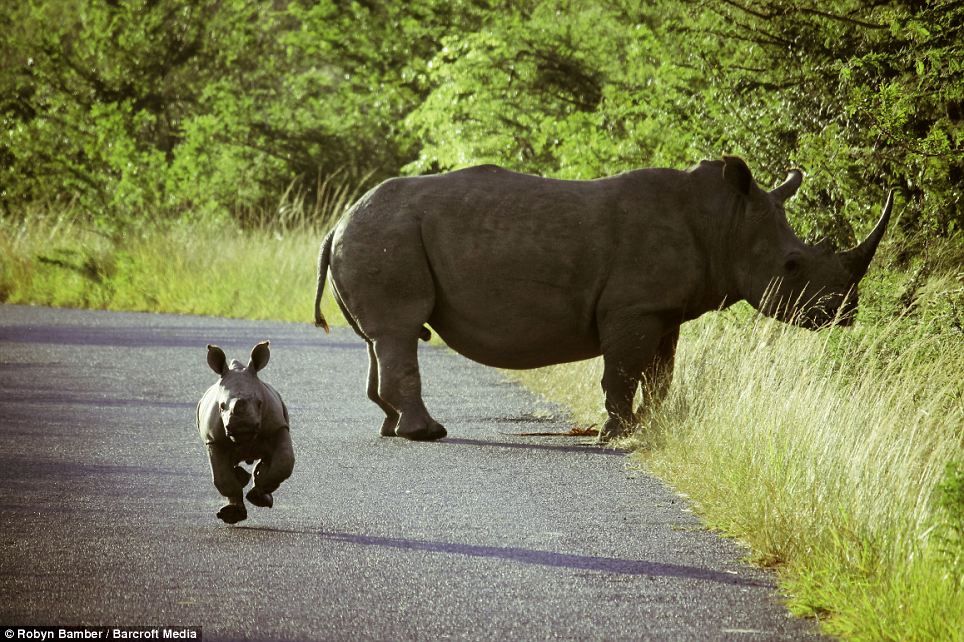
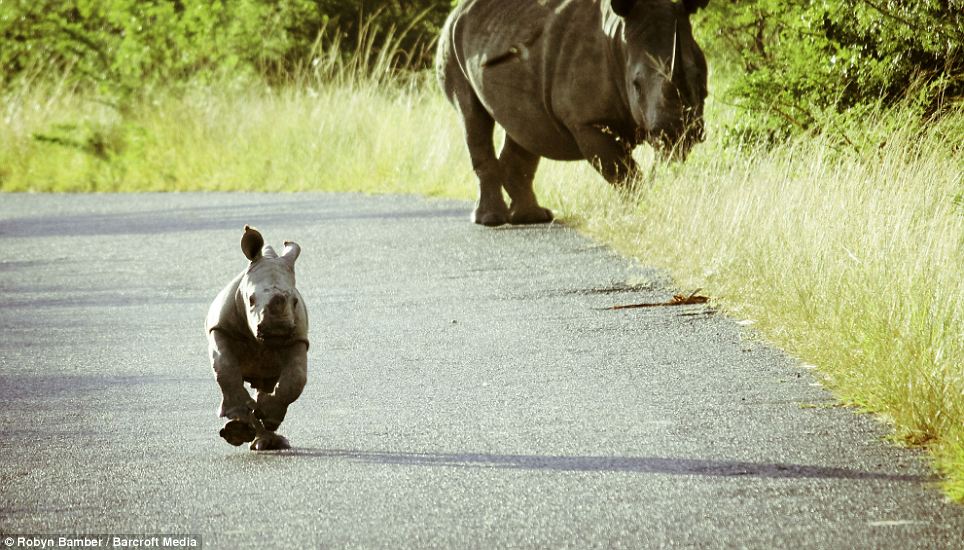
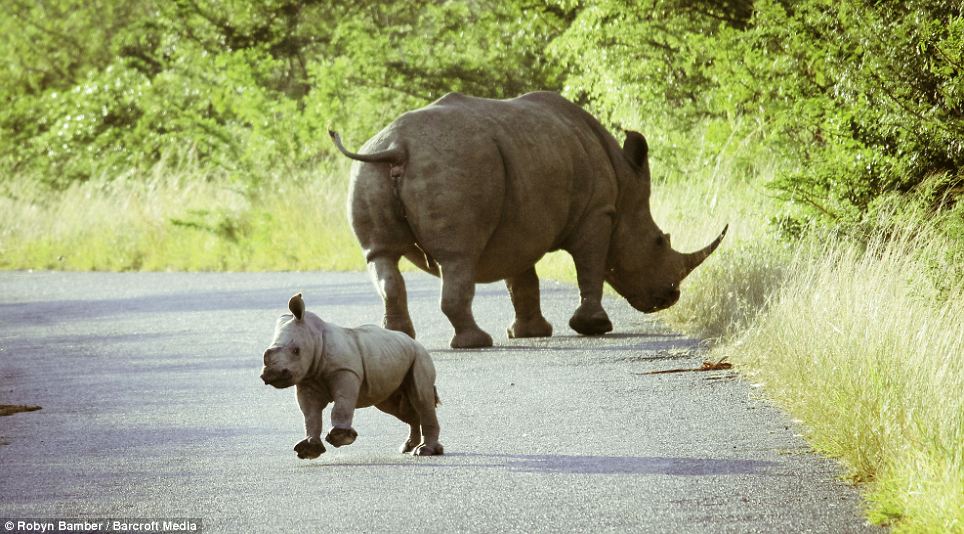
Credit: Robyn Bamber
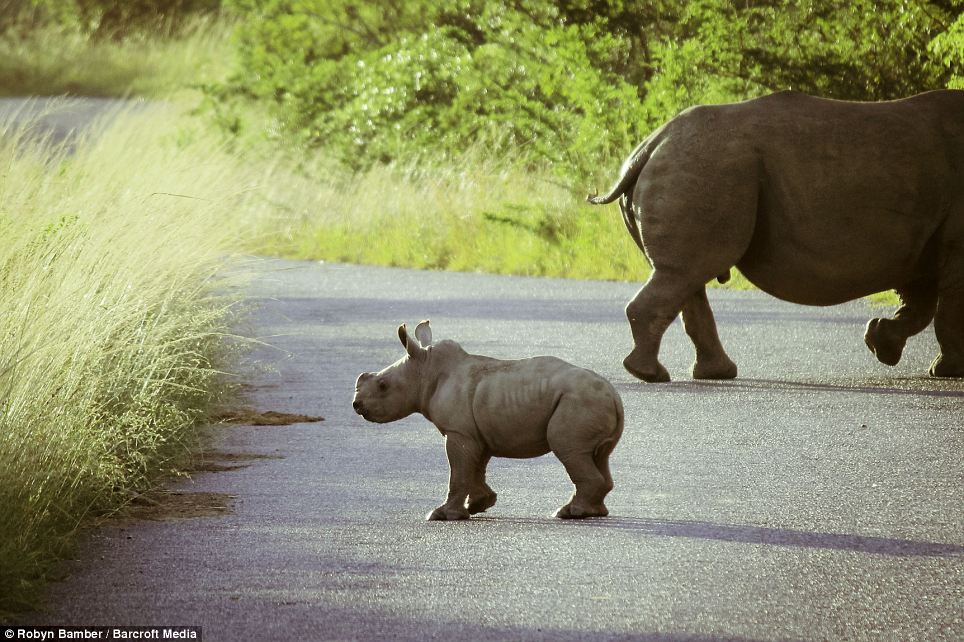
“At first glance, the little rhino had me in amazement, then I scrambled for my camera.” “He kept the guests and myself amused and laughing,” Robyn Bamber said.
“With the tiny rhino rushing ahead, the female rhino began to make her way up the road away from us.” “Then, as if to say, ‘Mum, keep an eye on this,’ the small rhino charged right at us,” Bamber continued.
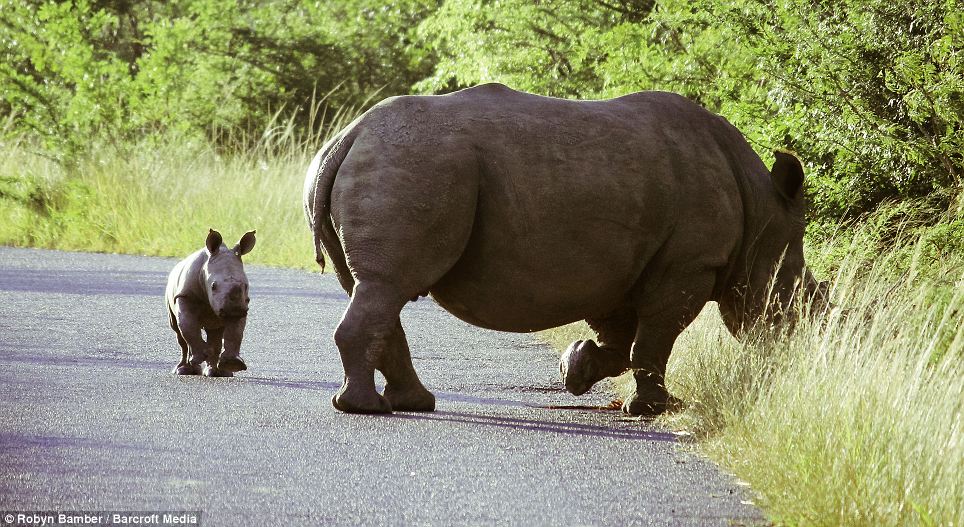
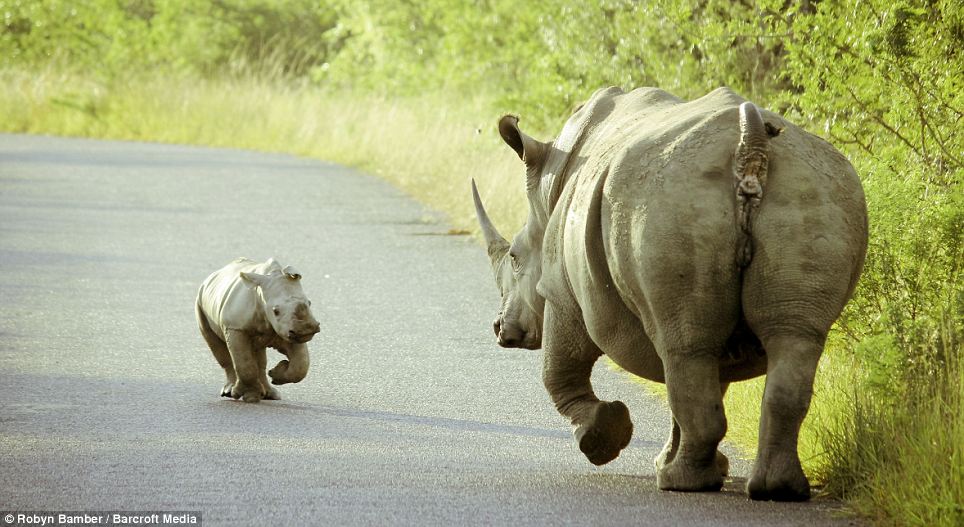
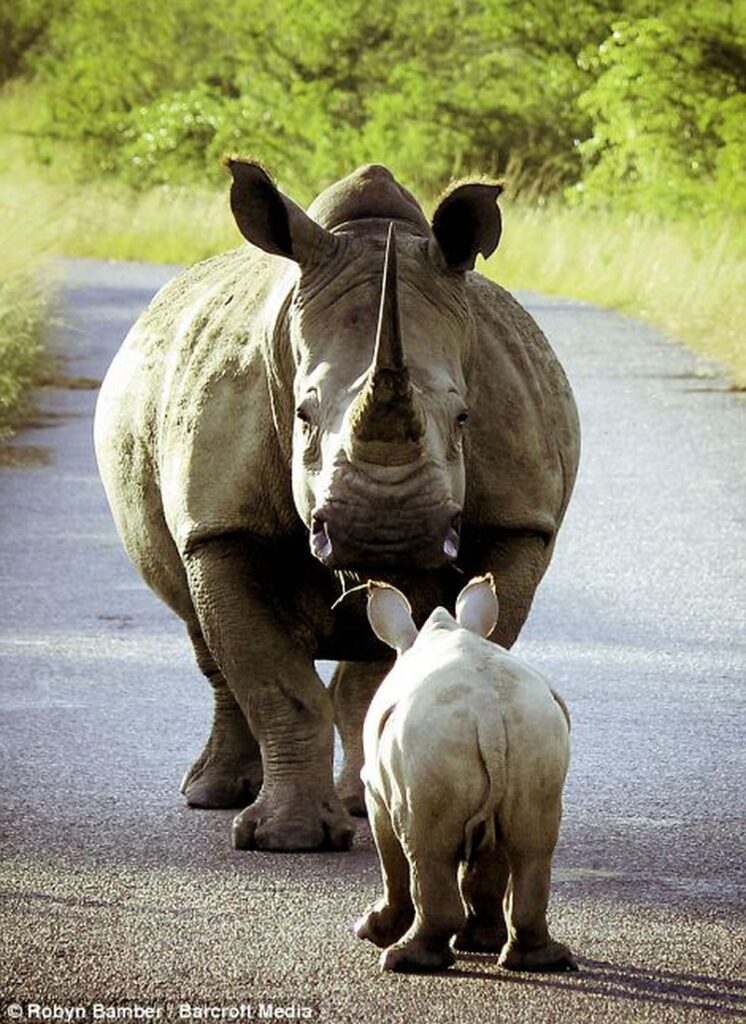
At the turn of the century, Africa and Asia were home to 500,000 rhinos. However, by 1970, the population had decreased dramatically to 70, 000 rhinos, and just about 27,000 rhinos survive in the wild today. Few rhinos are able to live outside of national parks and reserves due to decades of poaching for their horns and habitat destruction. Three rhino species are highly endangered: the black rhino, the Sumatran rhino, and the Javan rhino.
The horns of animals killed for their horns are bought and sold on the black market for a high price. Because of traditional medicine, rhino horns are in great demand in several Asian nations. It is purchased by rich people, particularly in China and Vietnam, for use in traditional Chinese medicine and other purposes. Rhino horns are formed of keratin, the same substance as hair and fingernails, but there isn’t enough proof to back up claims that they’re good for your health. There is also a demand for rhino horn dagger handles in North Africa and the Middle East.
Southern white rhinos, previously thought to be extinct in Africa, are now prospering in protected sanctuaries, despite being classed as Near Threatened. Unfortunately, the natural populations of the Western black rhino and Northern white rhino have lately been proclaimed extinct.
